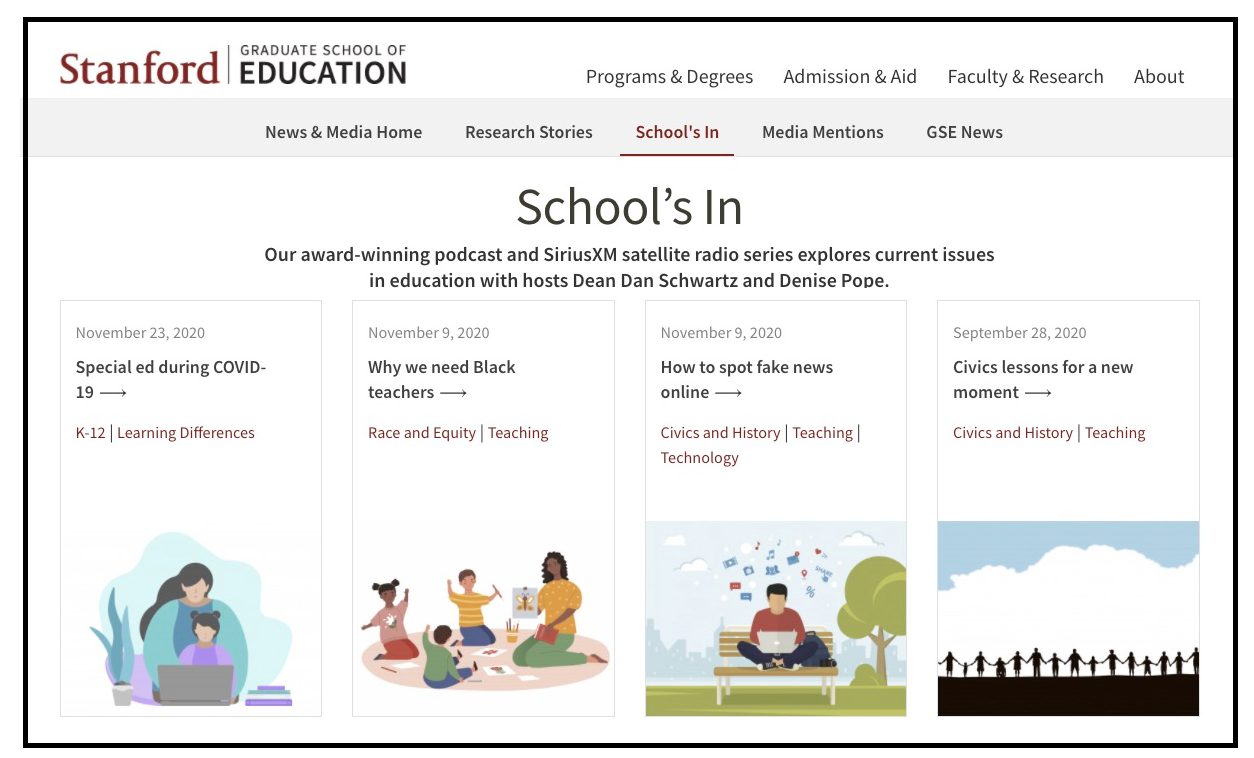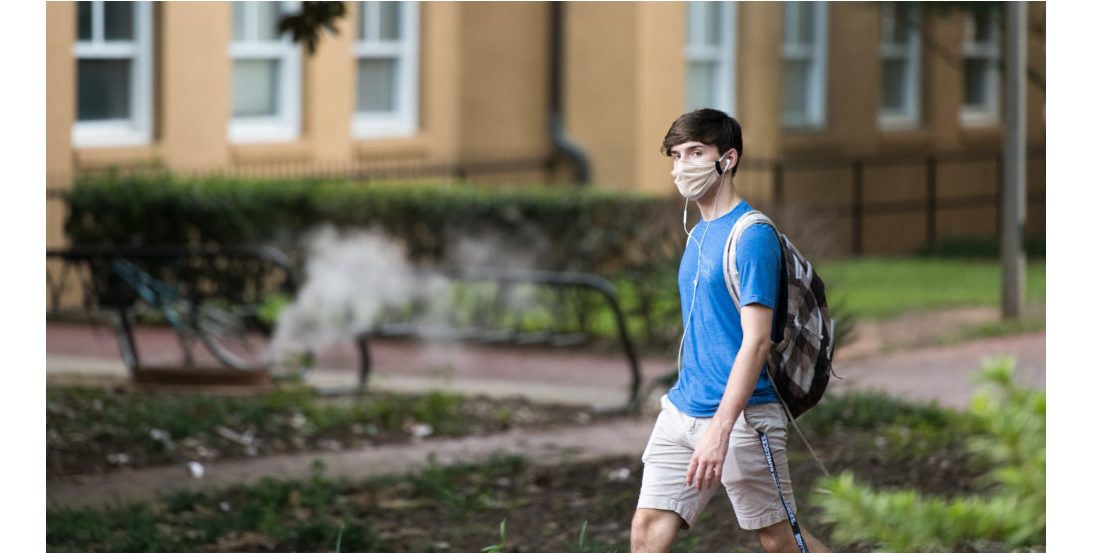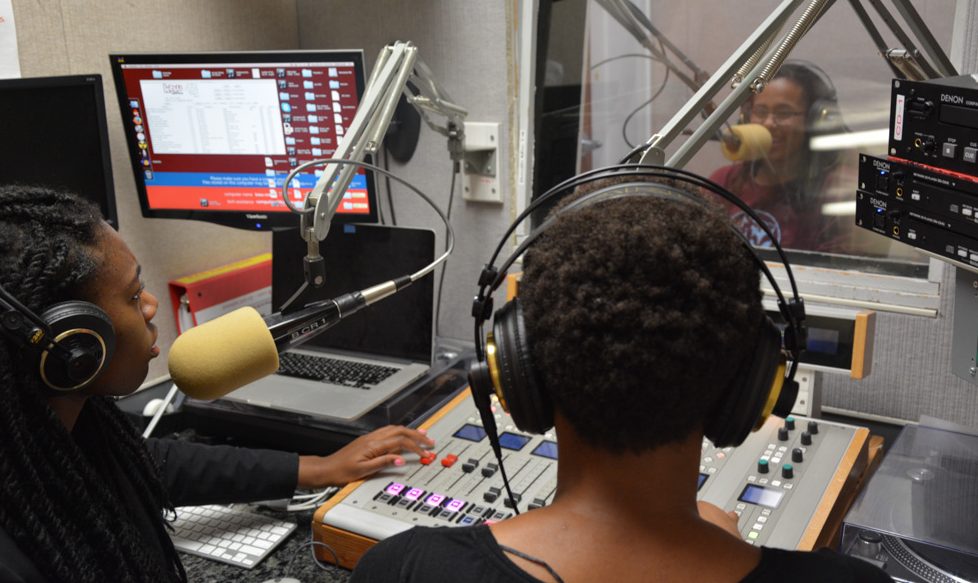A podcast is an episodic series of digital audio files made available on the Internet for streaming or downloading to a personal device (e.g., a computer, tablet, or smartphone). Podcasts are available on websites such as Stanford School’s In, Stanford Innovation Lab Podcasts, eCorner Stanford Podcasts, Stanford Radio website, CSET Teaching to Meet the Moment, or on streaming applications/distribution platforms such as Apple Podcasts, Google Podcasts, Spotify, and SoundCloud.

For decades, podcasts have been used for leisure and entertainment. However, in recent years, educators have started using podcasts for teaching and learning. For example, instructors can use podcasts for lecture delivery, student assignments, or community-building around interests.
Pros:
- Presents a wide range of subjects in a quick and efficient manner that is convenient for the instructors and students
- Requires minimal support for the users. Podcasts are available on almost any device
- Introduces and supports a broad array of narrative types that can improve student learning or understanding
- Low cost or free to listen
- Reduces screen time and Zoom fatigue
- Simpler to create and edit than video recordings
Cons:
- Creating high-quality podcasts requires expertise in audio production
- May require additional equipment (e.g., microphone, audio editing software, and podcast hosting services)
- Low-bandwidth or storage can impede podcast creation or consumption
- May not be suitable for teaching materials that require texts or visual support

What does this look like in a classroom?
Below are several use cases demonstrating how to utilize podcasts for teaching and learning in the classroom. Instructors can utilize existing podcasts as course content (Use Case 1), and/or produce customized podcasts for different educational purposes (Use Case 2, 3, and 4).
For in-depth information on how to produce and host a podcast, please see How to Create Your Own Podcast or check out the GSE IT and Makery Workshop Getting Started with Podcasting with the presentation slides.
Use Case 1: Sharing playlists to engage learners
To help students stay engaged and better focused on course content, Professor Nicole Ardoin generated a list of podcast episodes and shared them with students. During class, Professor Ardoin encouraged students to take breaks and listen to the podcast while walking outside or sitting somewhere different. Then, when students returned to the class, she set aside time and space (e.g., in breakout rooms or in the big group) to reflect and discuss the podcasts.
Use Case 2: Using podcasts to “flip the classroom”
In a “flipped classroom,” instructors pre-record lectures, and students watch the lectures on their own time before coming to the live class session. Instead of recording video lectures, instructors can record audio-only lectures to reduce student screen time.
Using podcasts to flip the classroom is more conducive to non-visual lecture material or discourse, as opposed to dense, technical instruction. Instructors should also be cautious about the length, as long episodes can lose an audience over time. Depending on the course content and pedagogical approaches, some instructors could also consider using podcasts to do guided reading, though this practice is more commonly used in K-12. Research also shows that podcasts can help with second language learning.
Use Case 3: Students submitting podcasts as an assignment
Podcasts may be adopted in lieu of written assignments. Students might submit podcasts as responses, reflections, commentaries, peer revisions, etc. Since podcasting might be new to many students, instructors can make podcasting assignments optional or allow alternative forms of submission. Instructors should establish clear guidelines and provide tutorials to students. For example, instructors can ask students to familiarize themselves with podcast production tools and features before creating their own podcasts.
GSE Assistant Professor Sarah Levine studies the use of digital media to teach reading and writing. Instead of having students submit written assignments, Dr. Levine incorporates writing for radio, where K-12 students submit radio projects for English classes. According to Dr. Levine, podcasts can carry students’ words beyond the boundaries of the classroom into the real world. Dr. Levine emphasizes that “using radio or podcasts as a framework for the teaching of writing draws the real world into the classroom and—with the use of smartphones and Web-based tools—sends students’ voices out into the real world.”
As a simple writing for radio exercise, instructors might ask students to flesh out a chosen idea into a full narrative or story. Students will then be required to include at least 15 sensory descriptions that allow an audience to see, hear, taste, smell, or touch the experience just as the narrator did. After the exercise, students would highlight what they believe to be concrete details. By doing this follow-up activity, students will learn how to assess the extent to which they have fulfilled the assignment while also allowing instructors to assess students’ understanding of concrete imagery.

Another radio writing assignment might ask students to create an “Audio Gift” or a description of a significant memory that involves someone important in their lives. The students would then share the selected memory with the same important person, someone close to that important person, or with a larger radio audience. The assignment should follow the format of 300-350 words and a 2-minute recording with optional sound or music. The instructors would grade based on how ready the recording is for broadcast, including if students used strong descriptive words, provided concrete imagery, or produced clear readings and recordings. For more information on the “Audio Gift” assignment, please see the Teaching Writing with Radio article by Sarah Levine.
Use Case 4: Guest speakers and extended conversations
Podcasts can serve as an alternative to pre-recorded guest interviews or lectures. Instructors might also invite students to bring in guest speakers to incorporate external voices across networks to share new perspectives. Remote interviewing apps and low latency technologies like Zoom allow for rapid and scalable interviews at a distance. See more about remote interview technologies here.

In this case, there are two advantages to using podcasts instead of pre-recorded videos. First, guest interviews or lectures recorded as podcasts can be more engaging and intimate as the medium lends itself well to informal exchanges or fireside chats. Second, utilizing asynchronous podcast guest lectures and interviews can extend learning and build community beyond the classroom boundaries while not burdening synchronous class time.
What does this look like outside of the classroom?
While podcasts can be a useful tool for increasing engagement and knowledge sharing within the classroom, they can also be an innovative way to build community and continue the spirit of knowledge sharing among departments or professional organizations. Below are several use cases demonstrating how to utilize podcasts to share recent happenings or research within an organization (Use Case 1), provide informal training to members (Use Case 2), or connect typically disparate groups (Use Case 3).
Use case 1: Sharing new research or conversations
Podcasts can be a more approachable way of updating members of new research or main event takeaways as compared to school- or organization-wide emails. For example, the Service Learning and Experiential Education Special Interest Group of the American Educational Research Association has a weekly podcast that gives an engaging, deeper dive into new research projects of its scholars. Another option could be creating a regularly scheduled, “bird’s eye view” podcast in the style of NPR News, during which scholars share short, ~5-minute synopses of their work or summaries of recent academic gatherings.
If you would like to see an example of how you can use podcasts to share new research or conversations, check out Teaching to Meet the Moment, the CSET podcast series co-produced by GSE IT on connecting with student well-being.
Use case 2: Providing informal training to members
Podcasts can be an innovative opportunity for you to provide mentorship or skills training to members of a department or professional organization. Want to learn more about different approaches to coding in qualitative research? Want to learn about the potential benefits of Natural Language Processing? Want to learn about different approaches to doctoral advising? These topics, although complex, are granular enough that they can be discussed by one expert – or a panel of experts – in the span of an hour-long podcast. The beauty of the podcast is that it provides opportunities for members to access educational resources without having to look at a screen or be confined to one space. The Cult of Pedagogy is one example of how educator networks are providing skills training and professional development for other educators through podcasts.
Use case 3: Building bridges within an organization
Many professional organizations or schools can be siloed into sub-groups that may not interact with one another often (e.g., Special Interest Groups, departments, or units). Podcasts are a small yet intentional way to increase and model communication between these disparate groups, building community within the organization as a result. For example, scholars from different SIGs or departments could join on a podcast to discuss different approaches to a broad issue in education or research. Many scholarly organizations on foreign affairs, such as the European Parliamentary Research Service, have implemented podcasts to this effect.
Additional Information:
For those interested in pursuing radio production more fully, check out Generation PRX, a network for connecting teachers and makers of radio, a resource hub for those who have questions about student-made radio, and a gateway to the Public Radio Exchange (PRX.org).
External resources:
Stanford School’s In
Five Stanford Podcasts to Wake Your Brain
Stanford Innovation Lab Podcasts
eCorner Stanford Podcasts
Stanford Radio